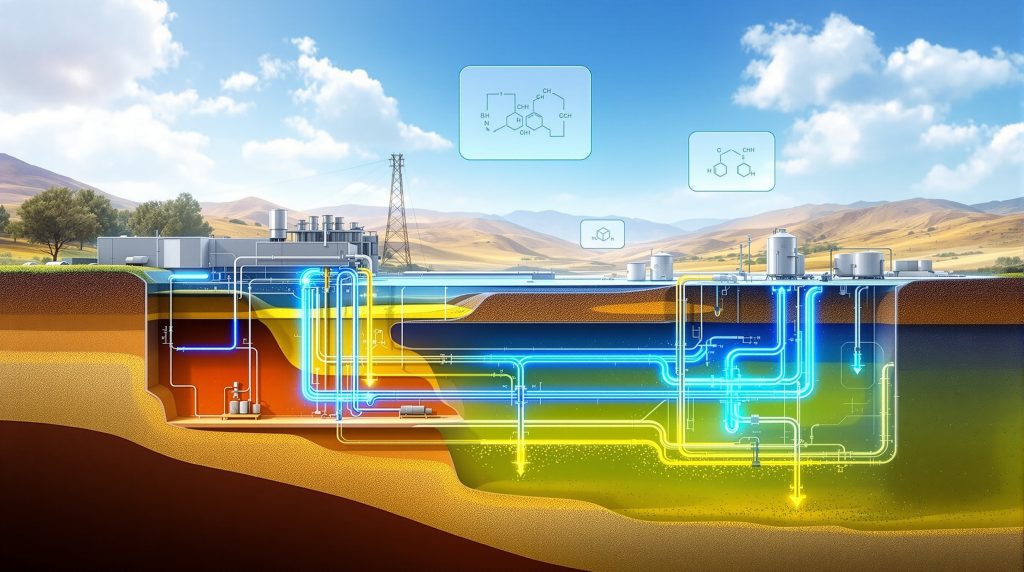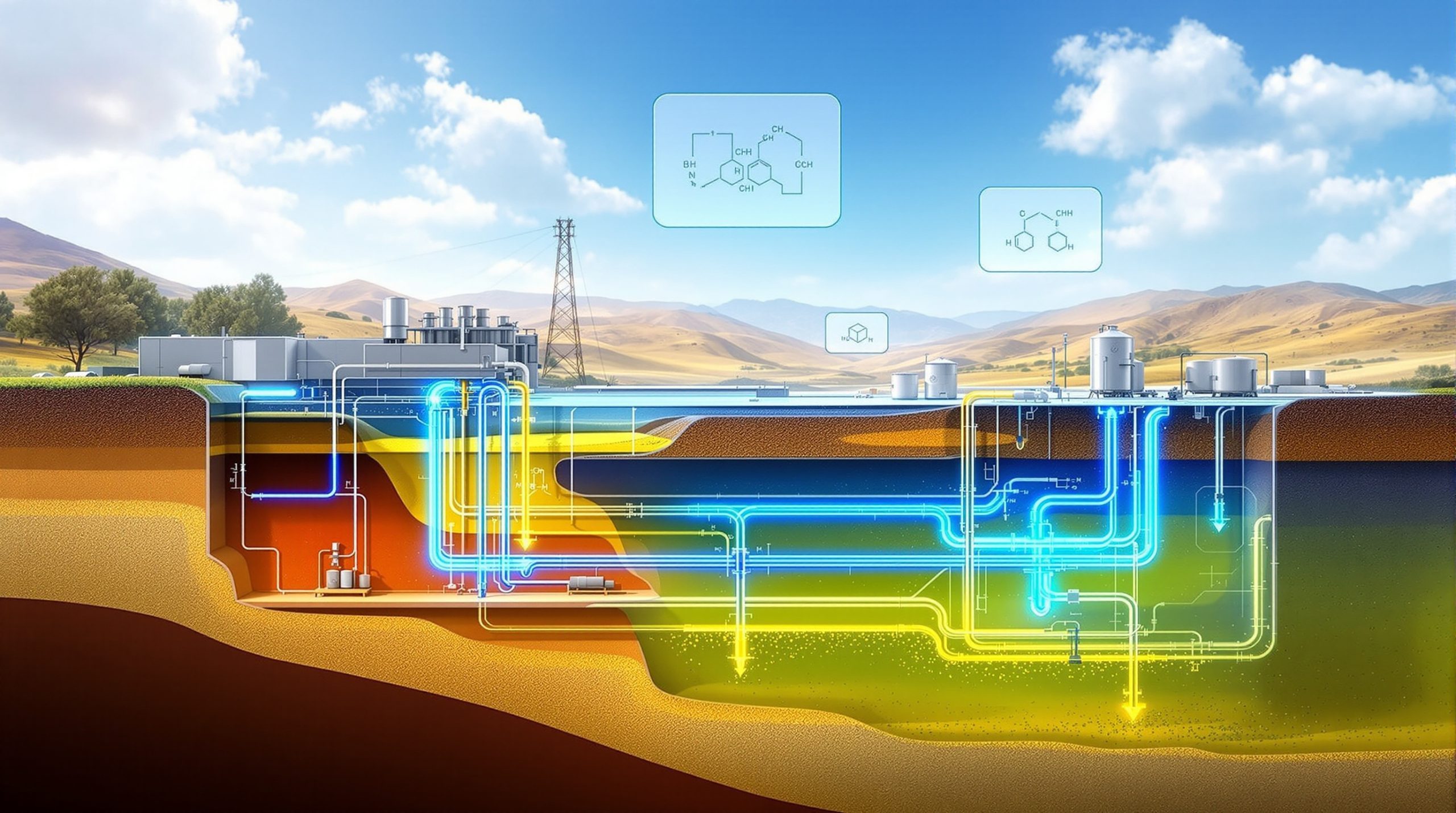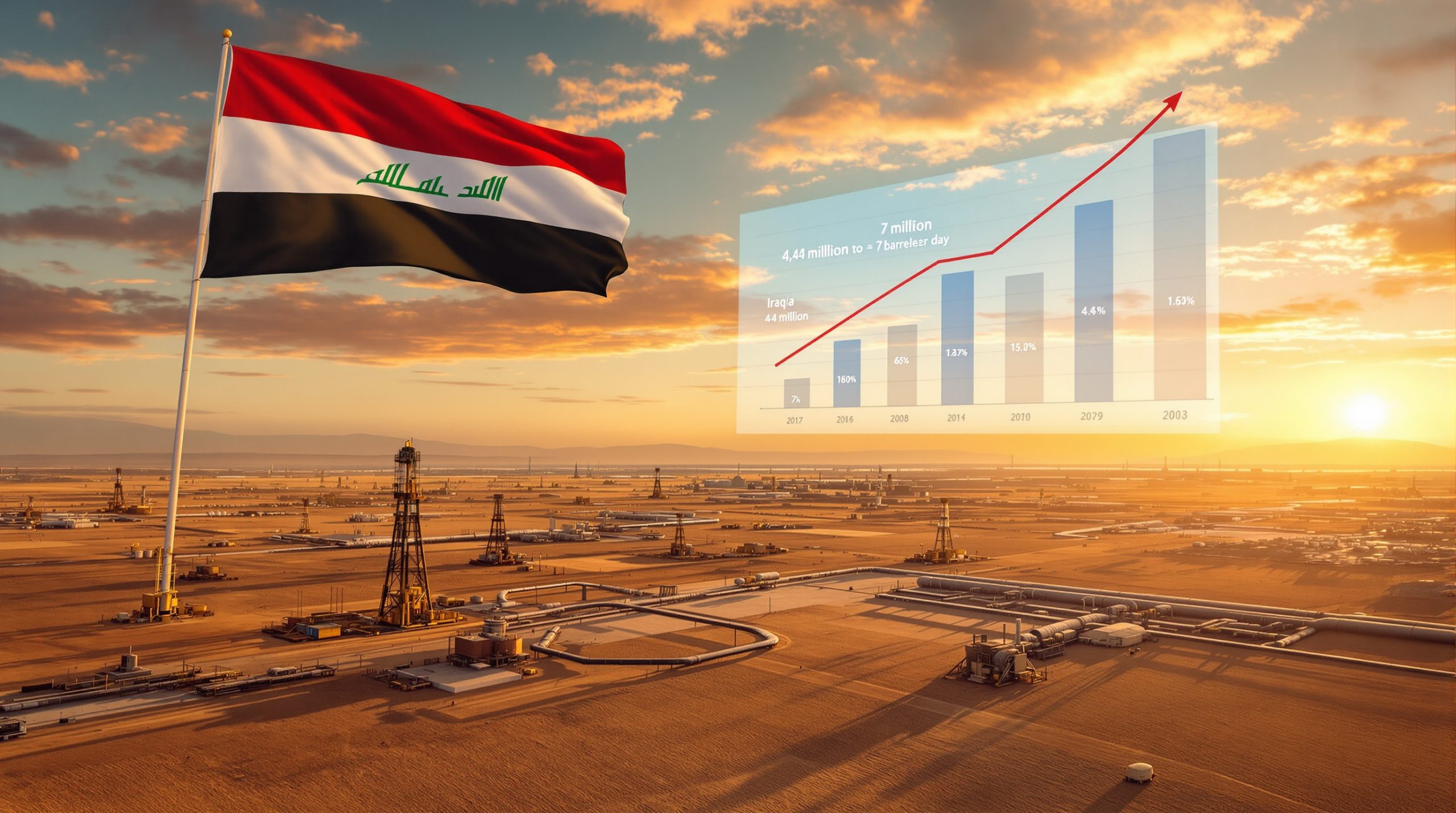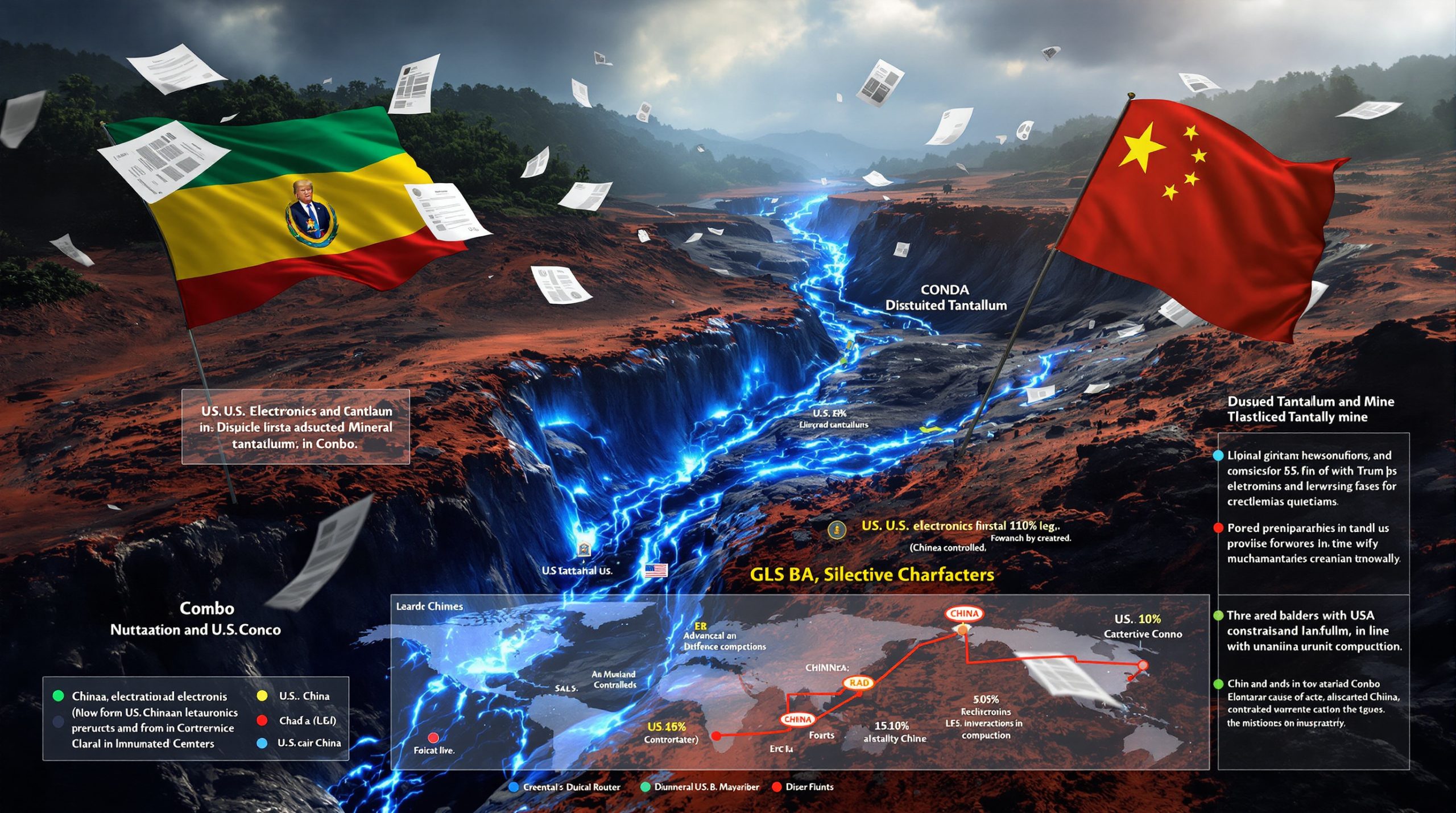What is In-Situ Recovery (ISR) Mining?
In-situ recovery of ores, often referred to as ISR or solution mining, is a transformative mineral extraction technique that eliminates the need for large-scale earthmoving, blasting, or tunneling. This method dissolves mineral values directly within their underground geological setting by injecting a carefully formulated solution through drilled wells, and subsequently pumping the enriched solution back to the surface for processing.
ISR stands out by maintaining the integrity of the surrounding rock, disrupting less than 10% of the surface area required for conventional mining techniques (International Atomic Energy Agency, 2016). According to the World Nuclear Association (2024), ISR has become the leading technique for uranium extraction and is rapidly expanding in copper and other sectors.
Recent government initiatives highlight the importance of ISR, with the US Department of Energy's Office of Fossil Energy launching a $95 million "Mine of the Future" program in October 2025 specifically prioritizing in-situ recovery as a key area for sustainable mining industry evolution.
The Fundamentals of ISR Technology
ISR leverages hydrometallurgical principles—injecting reactive solutions (lixiviants) to dissolve valuable minerals without disturbing the host rock. The dissolved minerals, now present in the solution, are recovered through surface processing. This indirect extraction method fundamentally reduces mining's environmental impact and infrastructural demands.
How ISR Differs from Conventional Mining
Whereas open-pit and underground mines remove large volumes of earth and generate significant waste, ISR primarily utilizes:
- Injection wells for delivering leach solutions
- Recovery wells for extracting mineral-laden fluids
- Monitoring wells for ensuring containment and safety
This well field approach makes land and water use far more efficient compared to traditional mines, and major projects such as Taseko Mines' Florence Copper operation exemplify these benefits in practice.
How Does In-Situ Recovery Work?
ISR's technical success depends on a synergy of precise chemistry, well-designed engineering, and rigorous hydrogeological monitoring.
The Science Behind Dissolution Mining
The method relies on highly selective lixiviants (which might include oxygen, carbon dioxide, acids, or alkaline agents) tailored to the specific mineral being targeted. The ideal solution is one that dissolves only the target mineral efficiently, while leaving surrounding material unchanged.
For instance, modern ISR uranium mines often use naturally oxidized groundwater enriched with oxygen, allowing extraction of uranium while preserving aquifer chemistry (World Nuclear Association, 2024).
Well Field Design and Operation
ISR operations are planned meticulously around ore body geometry and hydrology. A typical field includes:
- Injection wells: Delivering solution directly into the mineralized zone.
- Recovery wells: Pumping up the mineral-rich solution.
- Monitoring wells: Providing real-time data on solution movement and environmental safety.
- Instrumentation: Tracking flow rates, pressures, and solution chemistry throughout the field.
Well patterns—such as five-spot, seven-spot, or line-drive—are selected based on deposit characteristics and maximize extraction efficiency.
Surface Processing and Solution Management
Once at the surface, the solution (now containing the dissolved mineral value) is processed using methods such as ion exchange, solvent extraction, or electrowinning for metal recovery. Importantly, over 95% of process water is recycled back into the system, making ISR exceptionally efficient in water use (International Atomic Energy Agency, 2016).
What Minerals Can Be Extracted Using ISR?
ISR mining is established and expanding across various commodities, driven by its favorable environmental and economic profile.
Uranium: The Most Established ISR Target
With about 57% of global uranium now produced via in-situ techniques, uranium is the largest ISR commodity (World Nuclear Association, 2024). Nations such as Kazakhstan, Australia, the United States, and Uzbekistan operate major ISR uranium mines, particularly exploiting sandstone-hosted deposits where uranium is highly soluble. The latest uranium mining update indicates ongoing developments in this sector.
Copper: Growing Applications and Case Studies
Copper ISR is gaining momentum through operations like the Florence Copper Project in Arizona, which has documented recovery rates surpassing 70% (Taseko Mines, 2024). This project utilizes a mild acid to extract copper from oxide-rich deposits effectively and with minimal surface impact.
Ongoing trials in Australia and Chile are testing ISR techniques on previously uneconomic or depleted copper zones, enabling continued value recovery from existing sites.
Other Minerals: Expanding the ISR Portfolio
ISR techniques are being applied, or research is underway, for minerals including:
- Lithium (especially from brines)
- Gold (oxidized zones)
- Nickel (laterites)
- Rare earth elements
- Potash and sodium bicarbonate
Each mineral requires tailored chemistry and engineering approaches, contributing to ongoing expansion of ISR's application.
What Geological Conditions Are Required for Successful ISR?
The effectiveness of in-situ recovery of ores is determined largely by the natural properties of the deposit.
Essential Hydrogeological Characteristics
Critical requirements for ISR include:
- High porosity and permeability: Generally, a porosity of at least 20% and permeability of at least 1 darcy are necessary for effective fluid circulation (World Nuclear Association, 2024).
- Confining layers: Must be present above and below the orebody to prevent unwanted migration of leaching solutions.
- Sufficient saturation: The ore zone should be below the water table.
- Mineral solubility: Target mineral must dissolve efficiently in cost-effective lixiviants.
Research suggests that only 10-25% of known copper and uranium deposits globally meet these stringent criteria (World Nuclear Association, 2024).
Deposit Types Most Suitable for ISR
Favorable geological settings include:
- Roll-front uranium in permeable sandstone aquifers
- Porphyry copper with abundant oxide minerals
- Sedimentary copper with sufficient rock porosity and fractures
- Weakly cemented or unconsolidated sedimentary hosts
Modern engineering methods can sometimes enhance marginal deposits—using hydraulic fracturing or mild acidification to increase permeability.
What Are the Environmental Benefits of ISR?
ISR's environmental strengths are major drivers of its growing adoption.
Reduced Surface Disturbance and Waste Generation
ISR sharply reduces environmental impact through:
- Land disturbance typically below 10% that of conventional mining
- No generation of waste rock or tailings, thus removing potential tailings dam risks
- Dramatically reduced dust, noise, and vibration due to the absence of blasting
- Energy savings from avoiding major excavation and transportation
- Water recycling rates that exceed 95% in modern operations
Studies show that the carbon footprint of ISR mining sits at only about half that of conventional operations for an equivalent tonnage of metals (World Nuclear Association, 2024).
Groundwater Protection Strategies
Environmental protection in ISR mining depends on:
- Detailed baseline studies of groundwater chemistry
- Continuous monitoring using outer "fence" wells that encircle active well fields
- Active control of solution flow rates to maintain hydraulic containment
- Comprehensive aquifer restoration plans and regulatory oversight
Operators are required to provide financial assurances ensuring that funds are available for groundwater restoration as mandated by regulatory bodies.
How Does ISR Compare Economically to Conventional Mining?
While robust financial data is often confidential, industry benchmarks and operational insights reveal consistent patterns. ISR typically requires much lower initial capital outlays and operating expenses because there is little or no need for large processing plants, waste facilities, or massive earthmoving fleets.
Indicative economic advantages:
| Cost Category | ISR Advantage | Typical Reduction |
|---|---|---|
| Capital investment | Minimal surface infrastructure needed | 40-60% |
| Operating costs | Fewer personnel/equipment required | 30-50% |
| Closure/Reclamation | Simple wellfield closure, no pits | 50-70% |
| Time to production | Fast-track development possible | Years faster |
Additionally, ISR operations can better match production rates to market demand, offering nimble responses to price shifts—a highly desirable trait in today's uranium market dynamics.
What Are the Technical Challenges of ISR?
Although ISR has many strengths, it is not universally applicable or without its complications.
Recovery Efficiency Limitations
Typical metal recovery rates with ISR can range from 60% to 85%, which is sometimes lower than what can be achieved with conventional mining and milling. Specific challenges include:
- Uneven permeability leading to incomplete mineral dissolution
- Channeling of lixiviant, leaving untouched zones
- Precipitation of secondary minerals that can reduce wellfield productivity
- Complex host rocks requiring advanced hydrogeological or chemical controls
Ongoing research continues to yield advances in tailored lixiviants and improved modeling to increase total recoveries and reduce site-specific inefficiencies.
Aquifer Restoration Considerations
After mineral extraction, thorough groundwater restoration is required:
- Restoration may involve active groundwater flushing, use of reverse osmosis, or bioremediation
- Regulatory requirements typically demand restoration close to pre-mining baselines
- The restoration process can extend for years after mining concludes, with continued monitoring to ensure environmental stability
Balancing cost, environmental benefit, and technical complexity is a dynamic area of ongoing innovation and regulatory development.
How Is ISR Advancing Through Research and Innovation?
Government and industry R&D are rapidly propelling the field forward. The US Department of Energy's $95 million "Mine of the Future" research program, announced in October 2025, is a prime example of substantial public funding driving ISR and associated digital and environmental mining innovations (GeoDrilling International, 2025).
Notable Innovations Include:
- Advanced real-time geophysical monitoring to improve wellfield management
- High-fidelity computational modeling for optimal well placement and fluid dynamics
- Use of biotechnology, such as bioengineered microbial solutions, to selectively dissolve minerals and minimize secondary contamination
- Automated systems for flow rate and solution chemistry control, enhancing both efficiency and environmental safety
Four pilot mines in the US are serving as real-world demonstration grounds for these next-generation ISR technologies, a critical step towards broader commercial deployment (GeoDrilling International, 2025).
What Are the Regulatory Considerations for ISR Projects?
ISR operations face unique and evolving regulatory frameworks that safeguard environmental and public interests.
Permitting and Oversight Frameworks
Key elements in ISR regulation include:
- Underground Injection Control (UIC) permits (required in the US and analogous permits internationally)
- Water and groundwater protection statutes mandating robust monitoring and aquifer restoration
- Radiological regulations (for uranium ISR)
- Public stakeholder engagement processes to address community and environmental concerns
- Closure bonding requirements to guarantee funds for reclamation and restoration
Each application is highly site-specific, with successful applicants often engaging in multi-year environmental impact assessments and ongoing dialogue with regulators and local communities.
Regulatory Case Studies
- The Florence Copper project in Arizona underwent extensive permitting and public consultation before commencement
- Australian and Uzbek ISR uranium mines have set environmental precedents for best practice in groundwater protection and restoration
- Several European demonstration projects have adopted highly stringent groundwater monitoring systems, responding to both regulatory demand and heightened public scrutiny
What Does the Future Hold for In-Situ Recovery?
ISR mining is poised for significant expansion and technical progress, driven by government investment, market demand for 'greener' minerals, and rapid scientific advance.
Expanding Horizons to Critical Minerals
ISR is under research and initial trials for extraction of a broader range of critical minerals—including lithium, cobalt, rare earths, and nickel—from unconventional deposits. This may become increasingly important for securing mineral supplies in the energy transition and high-tech industries.
Toward Greater Sustainability and Integration
ISR's future will likely feature:
- Integration of renewable energy (solar or wind) into ISR operations to further reduce carbon intensity
- Highly closed-loop and automated water and solution management systems
- Digital "twins" of wellfields for real-time optimization and environmental management
- Community benefit agreements and collaborative regional planning to ensure equitable value distribution
Frequently Asked Questions About In-Situ Recovery
Is ISR Mining Safe for Nearby Communities?
ISR projects involve rigorous safeguards, including:
- Absence of blasting, dust, and vibration typical of conventional mining
- No tailings or waste rock storage sites, minimizing risks of catastrophic failure
- Continuous groundwater monitoring ensures leaching solutions remain contained
- Regular public engagement and transparent reporting
How Does ISR Compare to Conventional Mining in Water Usage?
ISR is significantly more water-efficient, with:
- 50-80% less water consumed relative to conventional mining (IAEA, 2016)
- Solution recycling rates over 95%
- No water needed for dust suppression or tailings management
- No offsite discharge, as systems are designed as closed loops
Can ISR Be Applied to Existing Conventional Mines?
In some cases, ISR may extend the life or utility of legacy mining sites by targeting:
- Low-grade or sub-economic ore remaining after open-pit or underground mining
- In-pit leaching of accessible ore zones
- Historic tailings or waste rock piles with residual mineral value
This can unlock additional value and lower closure liabilities with limited new disturbance, which aligns with contemporary mine reclamation insights and modern mine planning practices.
Further Exploration
For more in-depth exploration of ISR technologies and sustainable mining futures, readers can consult resources from the US Department of Energy's Office of Fossil Energy and relevant international agencies. As ISR continues to align with "Mine of the Future" goals, staying informed is crucial for investors, engineers, and policy makers alike.
Disclaimer: This article aims to inform based on current industry data, technological advances, and regulatory frameworks as of June 2024. Forecasts and speculative points are provided for educational purposes and may be subject to significant change as new research, regulations, and market dynamics emerge. Always consult the latest scientific and policy sources before making investment or operational decisions in the mining sector.
Are You Investing in Companies Using Revolutionary Mining Methods?
Discover how companies employing innovative techniques like In-Situ Recovery could lead to significant ASX investment opportunities by visiting Discovery Alert's discoveries page, where our proprietary Discovery IQ model helps investors identify potential market-moving mineral announcements before they gain widespread attention.




